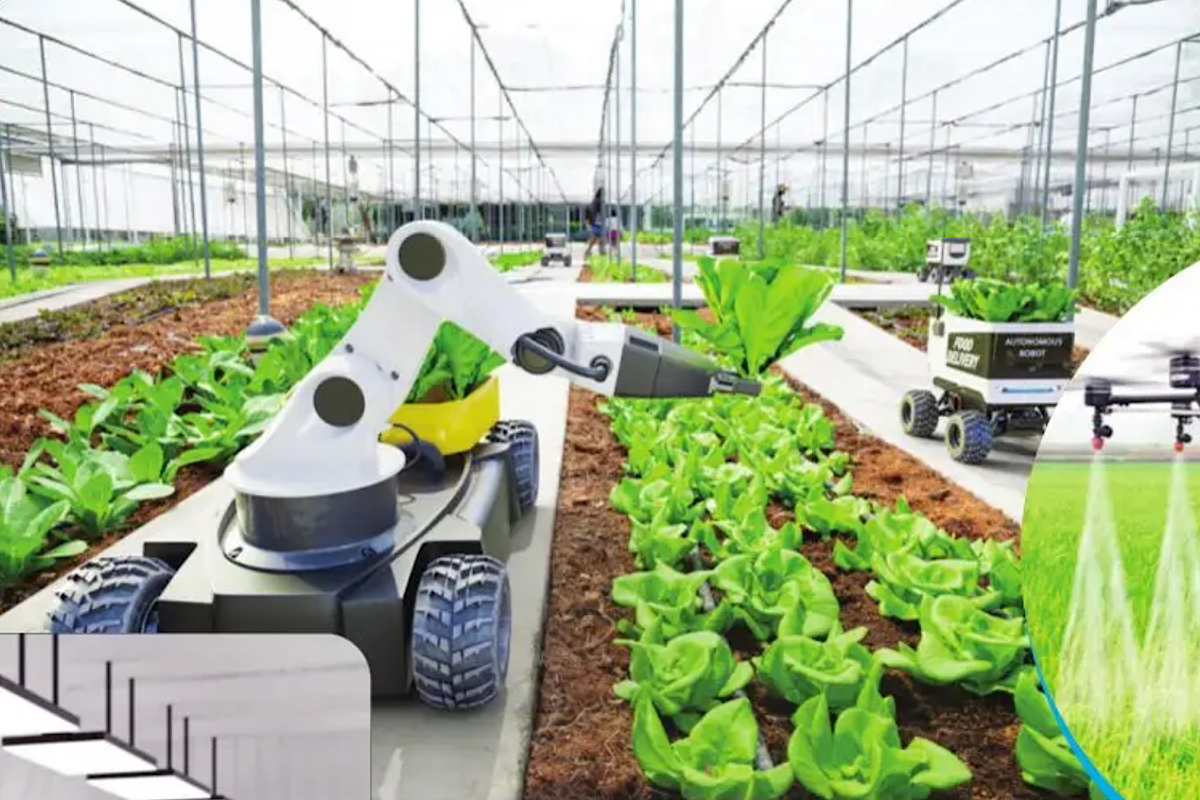Agriculture is the most important sector for the socio-economic development of the north-eastern region, as it provides the maximum contribution to the region’s net domestic product, employment, and livelihood. Despite the heavy dependence on it, agriculture in the region suffers from several problems, including small and scattered land holdings, monocropping, low mechanisation and productivity, post-harvest losses, poor market linkages, subsistence farming, etc.
Besides food security, sustainability is a major challenge facing agriculture in the northeast region. Conservation of natural resources and adopting sustainable agricultural methods are critical needs. Reducing environmental impact while increasing productivity is a major challenge.
Advertisement
ROLE OF TECHNOLOGY
The answers to many of the challenges and ensuring sustainability in agriculture, more so in the N.E. region, lie in the continuous technological innovation and smart deployment of the same, which are being driven by automation and precision farming. Digital technologies such as robotics, drones, artificial intelligence (AI), the internet of things (IoT), big data, blockchain, remote sensing, GIS, etc. are transforming agricultural value chains world-wide. The new technologies cut costs, improve efficiency, help reduce wastage of crops and food, create more opportunities in the value chain, and are environmentally sustainable.
SOME IMPORTANT APPLICATIONS OF TECHNOLOGY IN AGRI-HORTI VALUE CHAINS ARE:
Artificial Intelligence: AI can generate real-time actionable insights to help improve crop yield, optimise water usage and energy consumption, control pests, assist in soil screening, provide actionable data for farmers, and reduce their workload. Blockchain: It enables tamperproof and precise data about farms, inventories, quick and secure transactions, and food tracking.
Drone Technology: Enables surveying of large areas and data collection to generate better insights; frequent and cost-effective remote monitoring of crops and livestock; analysis of field conditions; and determination of appropriate interventions such as fertilisers, nutrients, and pesticides.
Geographical Information System and Remote Sensing: Helps in analysing the potential of irrigation projects and their impact on land degradation, erosion, and drainage; detection of pests and diseases; monitoring soil condition, etc. Internet of Things: This is used to monitor and predict light, humidity, soil moisture, temperature, crop health, etc., rainfall, temperature, and other
TECHNOLOGY ADOPTION IN INDIA AND THE N.E. REGION
The start-up boom in recent years in India has seen the establishment of many agri-tech enterprises. According to NASSCOM, there were around 450 agritech startups in India in 2022, with the number growing at 25 per cent year-on-year. It is reported that agritech startups in India offer a $24 billion opportunity. Progressive farmer entrepreneurs are using these technologies for spotting and controlling crop disease, optimum application of water, fertilisers, and other inputs, forecasting yield, and so on.
SOME IMPORTANT DIGITAL INITIATIVES OF THE GOVERNMENT OF INDIA ARE: Unified Farmer Services Interface: In June 2021, the Ministry of Agriculture and Farmers Welfare signed an MoU with Microsoft to create an IoTbased ‘Unified Farmer Services Interface’. This is a part of ‘AgriStack’—a unified platform to provide end-to-end services across the agriculture food value chain to farmers—by creating unique IDs for farmers across the country. Digital Agriculture Mission 2021 2025: In September 2021, the Union Agriculture Ministry announced the Digital Agriculture Mission 2021–2025 by signing MOUs with CISCO, Ninjacart, Jio Platforms Limited, ITC Limited, and NCDEX e-Markets Limited (NeML) to support agriculture based on new technologies, such as AI, block chain, remote sensing, GIS, drones, and robots.
National Agriculture Market (eNAM): This is a pan-India electronic trading portal that links the Agricultural Produce Market Committee (APMC) mandis. Direct Benefit Transfer (DBT) Central Agri Portal: The DBT Agri Portal is a unified central portal for agricultural schemes across the country, helping farmers adopt modern farm machinery through government subsidies. The technology adoption in agriculture in the north-east is very low, and very few agri-tech startups have come up in the region.
However, some notable new-age technology-based start-ups from the northeast region have developed the following excellent solutions: A multi-lingual, artificial intelligence-based application for managing farm activities on a smartphone or computer; a solution for contract farming and farm mechanisation; a smart logistics solution for buying agriinputs as well as selling the product directly to the markets; a digital platform to facilitate easy access to affordable financial services such as farm loans, crop insurance, livestock insurance, etc.; technology for plant tissue culture and microbial products.
The successful adoption of newage agriculture technologies in the northeastern states will depend on their cost, ease of operation and maintenance, and government initiatives. A holistic multi-stakeholder approach and ecosystem, mechanisms such as public-private partnerships (PPP), and government support are the critical success factors.
The writer is a senior policy advisor in the Government of Assam











